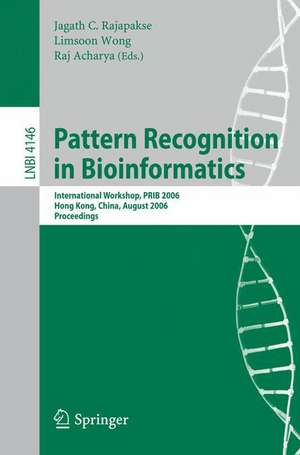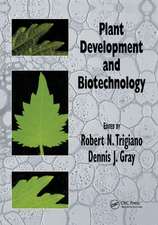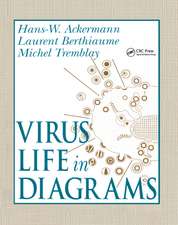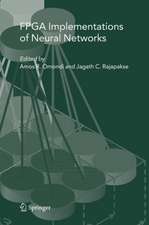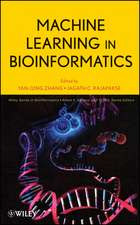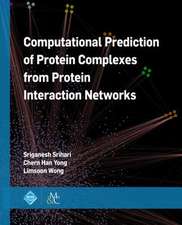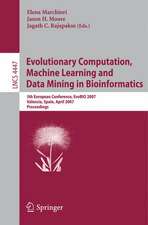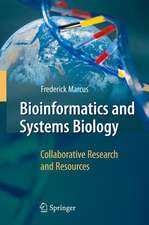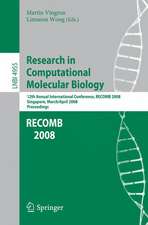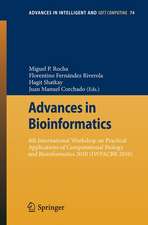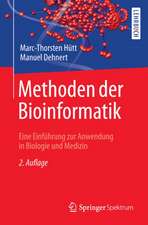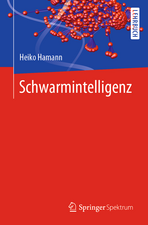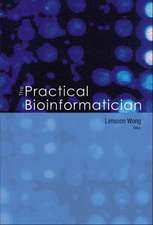Pattern Recognition in Bioinformatics: International Workshop, PRIB 2006, Hong Kong, China, August 20, 2006, Proceedings: Lecture Notes in Computer Science, cartea 4146
Editat de Jagath C. Rajapakse, Limsoon Wong, Raj Acharyaen Limba Engleză Paperback – 10 aug 2006
Din seria Lecture Notes in Computer Science
- 20%
 Preț: 1061.55 lei
Preț: 1061.55 lei - 20%
 Preț: 307.71 lei
Preț: 307.71 lei - 20%
 Preț: 438.69 lei
Preț: 438.69 lei - 20%
 Preț: 579.30 lei
Preț: 579.30 lei -
 Preț: 410.88 lei
Preț: 410.88 lei - 17%
 Preț: 427.22 lei
Preț: 427.22 lei - 20%
 Preț: 596.46 lei
Preț: 596.46 lei - 15%
 Preț: 448.04 lei
Preț: 448.04 lei - 20%
 Preț: 353.50 lei
Preț: 353.50 lei -
 Preț: 389.49 lei
Preț: 389.49 lei - 20%
 Preț: 309.90 lei
Preț: 309.90 lei - 20%
 Preț: 645.28 lei
Preț: 645.28 lei - 20%
 Preț: 763.23 lei
Preț: 763.23 lei - 15%
 Preț: 580.46 lei
Preț: 580.46 lei - 20%
 Preț: 310.28 lei
Preț: 310.28 lei - 20%
 Preț: 655.02 lei
Preț: 655.02 lei - 20%
 Preț: 1183.14 lei
Preț: 1183.14 lei - 20%
 Preț: 340.32 lei
Preț: 340.32 lei -
 Preț: 449.57 lei
Preț: 449.57 lei - 20%
 Preț: 591.51 lei
Preț: 591.51 lei - 18%
 Preț: 938.83 lei
Preț: 938.83 lei - 20%
 Preț: 337.00 lei
Preț: 337.00 lei - 20%
 Preț: 649.50 lei
Preț: 649.50 lei - 20%
 Preț: 607.40 lei
Preț: 607.40 lei - 20%
 Preț: 1414.79 lei
Preț: 1414.79 lei - 20%
 Preț: 1024.44 lei
Preț: 1024.44 lei - 20%
 Preț: 583.40 lei
Preț: 583.40 lei - 20%
 Preț: 453.32 lei
Preț: 453.32 lei - 20%
 Preț: 575.49 lei
Preț: 575.49 lei - 20%
 Preț: 1075.26 lei
Preț: 1075.26 lei - 20%
 Preț: 585.88 lei
Preț: 585.88 lei - 20%
 Preț: 825.93 lei
Preț: 825.93 lei - 17%
 Preț: 360.20 lei
Preț: 360.20 lei - 20%
 Preț: 763.23 lei
Preț: 763.23 lei - 20%
 Preț: 340.32 lei
Preț: 340.32 lei - 20%
 Preț: 504.58 lei
Preț: 504.58 lei - 20%
 Preț: 369.13 lei
Preț: 369.13 lei - 20%
 Preț: 580.93 lei
Preț: 580.93 lei - 20%
 Preț: 343.62 lei
Preț: 343.62 lei - 20%
 Preț: 350.21 lei
Preț: 350.21 lei - 20%
 Preț: 583.40 lei
Preț: 583.40 lei - 20%
 Preț: 583.40 lei
Preț: 583.40 lei - 15%
 Preț: 438.59 lei
Preț: 438.59 lei - 20%
 Preț: 341.95 lei
Preț: 341.95 lei - 20%
 Preț: 238.01 lei
Preț: 238.01 lei - 20%
 Preț: 538.30 lei
Preț: 538.30 lei
Preț: 328.27 lei
Preț vechi: 410.34 lei
-20% Nou
Puncte Express: 492
Preț estimativ în valută:
62.82€ • 65.35$ • 51.86£
62.82€ • 65.35$ • 51.86£
Carte tipărită la comandă
Livrare economică 15-29 aprilie
Preluare comenzi: 021 569.72.76
Specificații
ISBN-13: 9783540374466
ISBN-10: 3540374469
Pagini: 200
Ilustrații: XII, 186 p.
Dimensiuni: 155 x 235 x 11 mm
Greutate: 0.3 kg
Ediția:2006
Editura: Springer Berlin, Heidelberg
Colecția Springer
Seriile Lecture Notes in Computer Science, Lecture Notes in Bioinformatics
Locul publicării:Berlin, Heidelberg, Germany
ISBN-10: 3540374469
Pagini: 200
Ilustrații: XII, 186 p.
Dimensiuni: 155 x 235 x 11 mm
Greutate: 0.3 kg
Ediția:2006
Editura: Springer Berlin, Heidelberg
Colecția Springer
Seriile Lecture Notes in Computer Science, Lecture Notes in Bioinformatics
Locul publicării:Berlin, Heidelberg, Germany
Public țintă
ResearchCuprins
Pattern Recognition in Bioinformatics: An Introduction.- Pattern Recognition in Bioinformatics: An Introduction.- 1: Signal and Motif Detection; Gene Selection.- Machine Learning Prediction of Amino Acid Patterns in Protein N-myristoylation.- A Profile HMM for Recognition of Hormone Response Elements.- Graphical Approach to Weak Motif Recognition in Noisy Data Sets.- Comparative Gene Prediction Based on Gene Structure Conservation.- Computational Identification of Short Initial Exons.- Pareto-Gamma Statistic Reveals Global Rescaling in Transcriptomes of Low and High Aggressive Breast Cancer Phenotypes.- Investigating the Class-Specific Relevance of Predictor Sets Obtained from DDP-Based Feature Selection Technique.- A New Maximum-Relevance Criterion for Significant Gene Selection.- 2: Models of DNA, RNA, and Protein Structures.- Spectral Graph Partitioning Analysis of In Vitro Synthesized RNA Structural Folding.- Predicting Secondary Structure of All-Helical Proteins Using Hidden Markov Support Vector Machines.- Prediction of Protein Subcellular Localizations Using Moment Descriptors and Support Vector Machine.- Using Permutation Patterns for Content-Based Phylogeny.- 3: Biological Databases and Imaging.- The Immune Epitope Database and Analysis Resource.- Intelligent Extraction Versus Advanced Query: Recognize Transcription Factors from Databases.- Incremental Maintenance of Biological Databases Using Association Rule Mining.- Blind Separation of Multichannel Biomedical Image Patterns by Non-negative Least-Correlated Component Analysis.- Image and Fractal Information Processing for Large-Scale Chemoinformatics, Genomics Analyses and Pattern Discovery.- Hybridization of Independent Component Analysis, Rough Sets, and Multi-Objective Evolutionary Algorithms for Classificatory Decomposition of Cortical Evoked Potentials.
